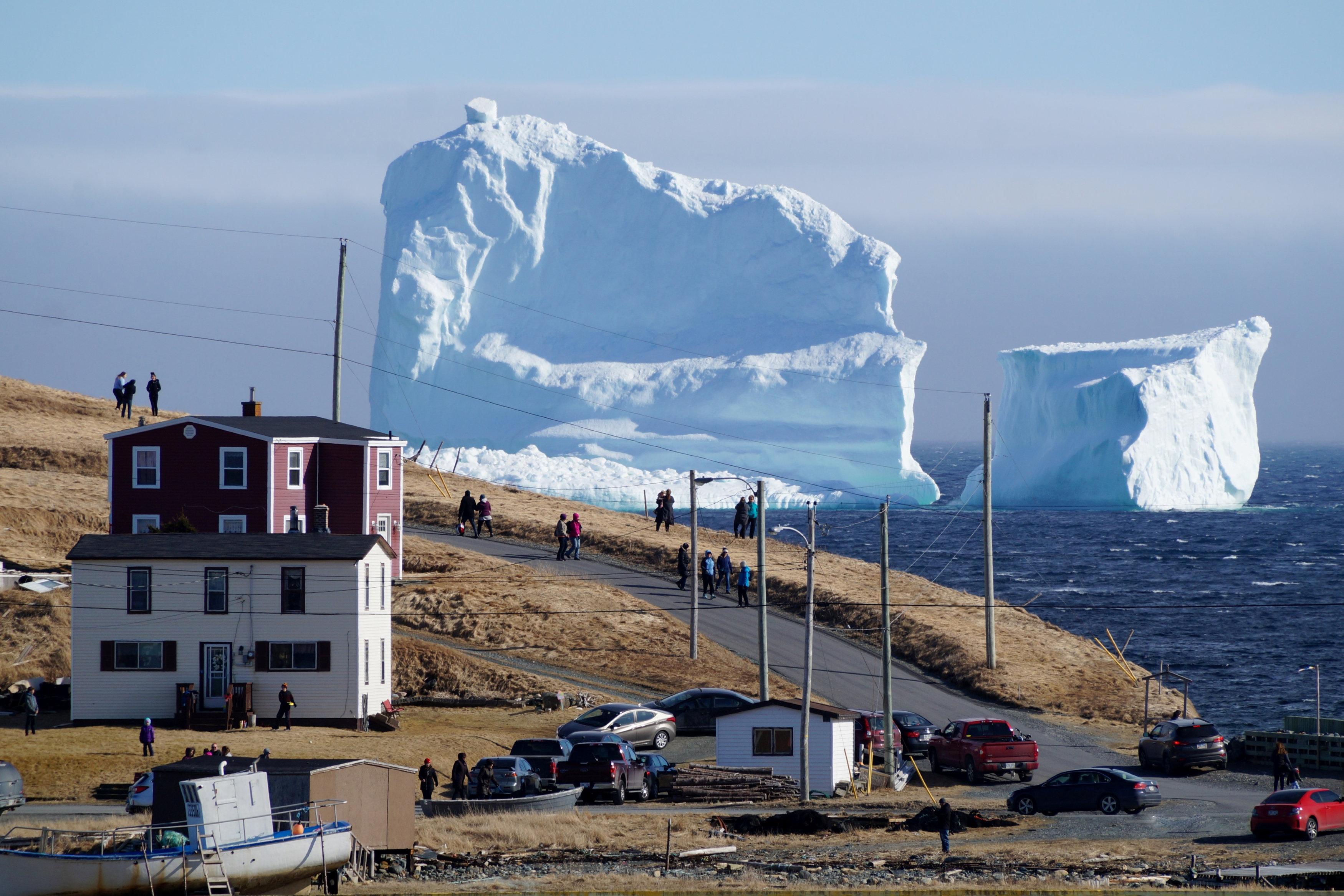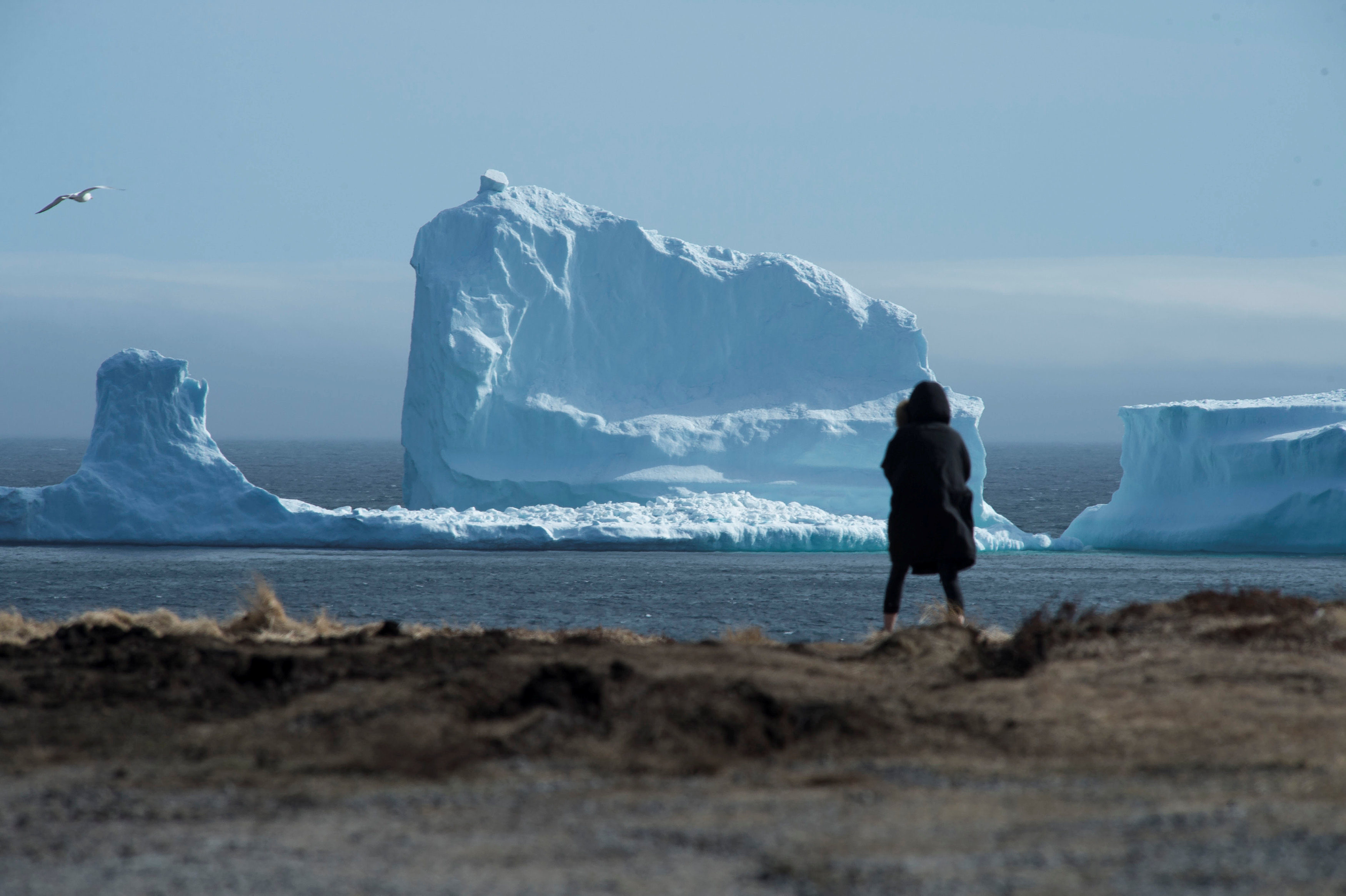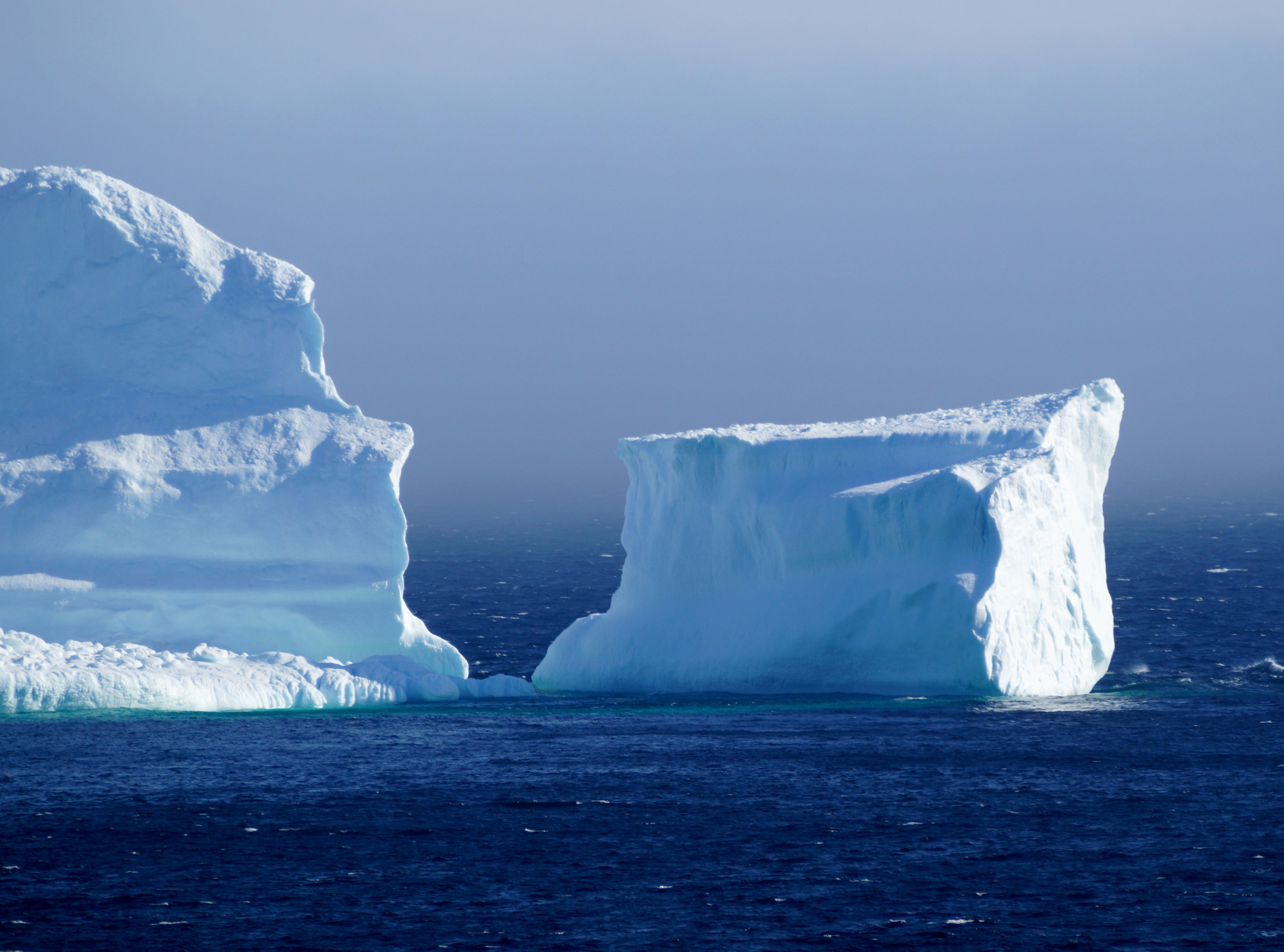A chunk of the Arctic stops by for a photo shoot

An iceberg ran aground over Easter weekend just off the small Newfoundland town of Ferryland, population 465, drawing knots of tourists eager to catch a glimpse.
Some are locals or travelers who happened to be nearby, but many are a special Canadian breed, the iceberg chaser — people who flock to the coasts of Labrador and Newfoundland at this time of year hoping to see the huge frozen chunks of broken glacier that drift by on a stretch of sea known as Iceberg Alley.
The berg at Ferryland rises about 15 stories above the waterline — and that is only about 10 percent of its mass. Some of the submerged ice comes into view when the berg is seen from above.
“Most folks can’t wrap their heads around how big it is,” Barry Rogers, the owner of Iceberg Quest Ocean Tours, a Newfoundland tour operator, said in an interview Thursday.

Iceberg season starts in April, and there has been a bumper crop this year. More than 600 bergs have drifted into the North Atlantic shipping lanes so far, a count not usually reached until late May or early June, according to the International Ice Patrol of the U.S. Coast Guard in New London, Connecticut. The typical amount for April is closer to 80.
Heavy winds have blown several icebergs close to shore — a boon for iceberg chasers, but a nuisance for the local fishing industry. The entrance to the harbor in St. John’s, the provincial capital, is “plugged solid,” Rogers said. “A lot of our fisher folks are just tied onto the wharf, waiting for the ice to move offshore.”
The stunning view that is causing traffic jams of onlookers on the coast road is actually a snapshot of the iceberg’s death throes, 15,000 years in the making. What began as snowflakes falling on Greenland during the last ice age has crept to the sea in a glacier and then broken off, probably sometime in the last three years, to float slowly out into Baffin Bay. Bumped and nudged by one another and by melting pack ice, the bergs eventually get caught up in the southbound Labrador Current and sail down Iceberg Alley.
Exposed to the warmer sun of spring and summer in lower latitudes, the bergs begin to shrink and to develop large crevices that channel floods of meltwater. If they come near shore, the bergs may bottom out on the ocean floor and come under immense pressure as the seawater stops supporting their weight. Falling tides are often the final straw, causing the grounded iceberg to break up suddenly into the waves.
“They can tumble down in a New York second,” Rogers said. “Sometimes it’s as loud as a cannon shot.”
